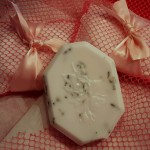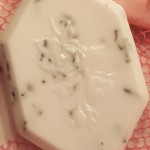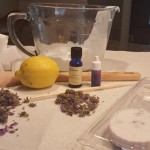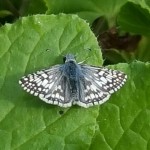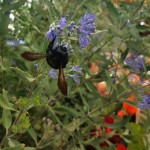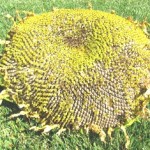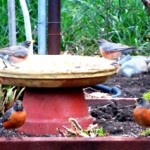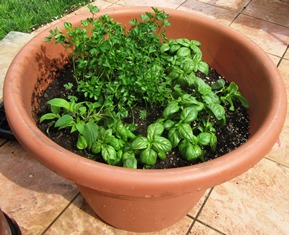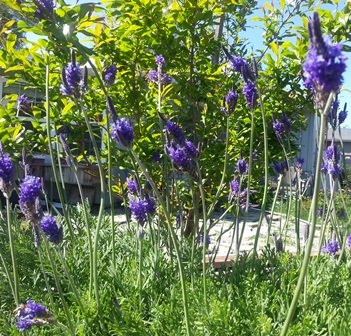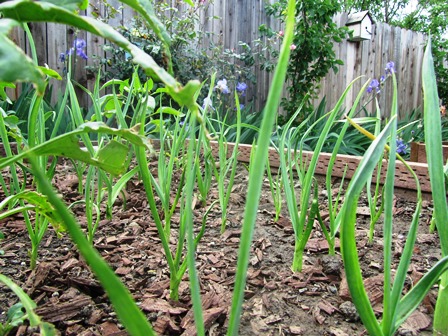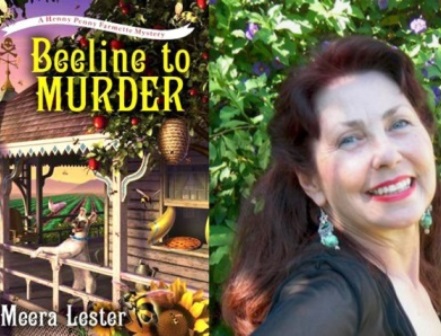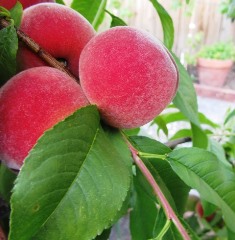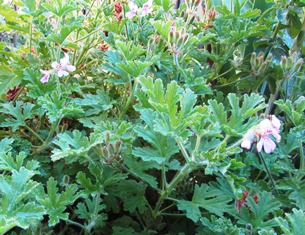Making Homemade Soap in Under an Hour
My grandmother grew up on a farm in Boone County, Missouri, and from spending a childhood with her I learned how to be frugal, self-sufficient, and someone who values time and efficiency.
On laundry day, she would whip out a big bar of grayish soap she’d made from an old country recipe and use it for scrubbing dirty clothes. The soap contained lye, grease, ammonia, borax, and water.
It looked like an ash-colored cake; I wouldn’t be surprised if it had some ash in it. That soap was utilitarian to be sure, but nothing you’d ever want use for a bath, although I suppose on occasion it might have been used.
Bath soaps have come a long way since the 1920s frugal creations of farm folks like my grandmother. Today, you can find exquisite artisan soaps–many are imported from France, Italy, and elsewhere–in a variety of colors, shapes, sizes, and scents. Or . . . you could make your own.
At hobby and craft stores, you’ll find soap-making kits that provide the basics for making soap in under an hour. You’ll also need some soap color to give your soap an appealing hue (otherwise, the soap comes out white). Finally, drops of your favorite essential oil will give your soap a sensual fragrance.
Recently, the birthday of a friend inspired me to quickly make a few bars of bath soap to wrap and tuck in my “spa” gift package for her. If you haven’t made soap before, start with a kit for soap making such as the one sold by ArtMinds and found in craft stores.
That particular kit uses a goats milk recipe with a suspension formulation that allows additives to float freely throughout the soap. This is important when you want to add to the soap rose or other flower petals or herbs like basil, lavender, or mint. The finished bar of soap lathers luxuriously and leaves your skin feeling squeaky clean.
Lavender-Scented Soap Using the ArtMinds Kit
Ingredients:
1 Goats Milk Soap Kit with 32 scored cubes
1 package of soap-making color (comes with blue, green, and purple); use purple for lavender soap
Lavender essential oil
Plastic sheet of soap molds
*Wooden spoon
*Pyrex glass measuring bowl or microwavable dish
*Do not reuse soap-making utensils or bowls for food service.
Directions:
Remove 10 cubes of “raw” soap formulation. Melt the cubes in a large glass measuring bowl for 30 seconds; if not completely melted, microwave in 10-second increments.
Add drops of lavender color until the desired hue is achieved. Add ten drops of lavender essential oil. Stir to thoroughly mix ingredients.
Pinch off the tiny florets of a sprig of fresh lavender. Drop into the soap and gently blend them in.
Pour the soap to the top of the mold(s). Let set for 20 minutes before removing the hardened soap. I suggest wrapping each soap individually to give as gifts.
For more resources, check out Marie Browning’s book, Natural Soapmaking (Sterling Publishing, NY) or visit Rebecca’s Soap Delicatessen at http://soapdelinews.com/2015/07/how-to-make-cold-process-soap-from-scratch.html
____________________________________________________
If you’re interested in farmette topics and storytelling, check out my Henny Penny Farmette series of mysteries. All three books in the series are available in numerous formats and can be ordered from Amazon, Barnes and Noble, and elsewhere online as well as from traditional bookstores everywhere. See more at http://tinyurl.com/ya5vhhpm
Plant for the Pollinators
I seldom need an occasion to put in another bed of flowers, but this is National Pollinator Week. I think a new bed is in order to attract local bees, birds, bats, and butterflies–all considered pollinators. Having these small creatures around benefits landscapes, gardens, and orchards.
The U.S. Fish and Wildlife Service has noted that over 75 percent of our plants are pollinated by birds, animals, and insects. We can help ensure these creatures will be around for a long time if we restore their habitats and ensure they have food and water.
There are many lovely plants you can grow that don’t require a lot of care.
- lavender
- bee balm
- echinacea
- sage
- cilantro
- thyme
- sunflowers
- sweet alyssum
- anemone
- borage
- geraniums
- scented pelargoniums
- mint
A tapestry of colorful herbs and flowers beautifies your landscape and pollinators love the diversity. If you don’t have a lot of space, grow some of these plants in planter boxes, clay pots, or other types of containers.
Put in a water feature, too, such as a table-top or larger fountain that recycles water. Even a pottery saucer filled each day can attract pollinators.
It won’t take long for the bees and hummingbirds to find the water. Their frequent visits are fun to watch, and they’ll likely be sipping throughout the day.
_________________________________________________________________________
If you enjoy reading about farmette topics, check out my Henny Penny Farmette series of cozy mysteries from Kensington Publishing. My newest novel includes delicious recipes, tips on keeping bees and chickens, and much more. Click on this URL for more information, http://tinyurl.com/ya5vhhpm
.
Uses of Herbs in Your House and Garden
Herbs in abundance line the shelves of local garden centers now, and for good reason. Many of these versatile plants are hardy and adaptable and have myriad uses in a landscape.
Cooks, especially, appreciate access to culinary herbs near the kitchen. Grow cilantro, parsley, sage, tarragon, chives, basil, anise, dill, mint, and other desirable culinary herbs in boxes or giant pots on a kitchen patio. The location will make it easy to water and gather them.
Many herbs like chives, sage, and dill re-seed themselves, therefore, consider growing these in containers unless you have a designated space in your garden for them.
For shady areas in a landscape or garden, plant sweet woodruff, Borage, and chamomile. In areas that receive full sun, plant rosemary, mother-of-thyme, caraway-scented thyme, and woolly thyme. In areas that remain moist, plant angelica, mints, parsley, and sweet woodruff.
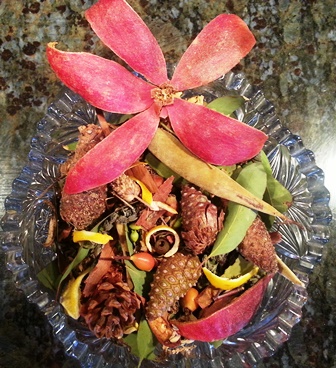
The leathery pomegranate peel takes center stage in this potpourri that utilizes herbs, seed pods, spices, and citrus peels
To grow herbs for potpourris and sachets to scent rooms in your home, cultivate costmary, English woodruff, and lemon-scented herbs like pelargonium and verbena. Also rose geranium and lavender add a lovely scent to mixtures of herbs for potpourri.
With so many different ways to use herbs to beautify a garden or patio and to flavor foods and scent a home, there’s no reason not to grow a few. Remember, herbs (like mint) can be dried for tea or crumbling over salads and you can collect herb seeds or propagate cuttings for next year’s herb garden.
Fern-leaf Lavender Is Easy to Grow and Re-seeds
My hubby brought home several Lavandula multifida plants in five-gallon pots. Also known as Egyptian lavender or Fern-leaf lavender, the plant’s foliage appears fernlike, hence its common name.
The Fern-leaf lavender carries its bluish-purple bloom on three- to five-inch spikes. It’s a pretty plant in the garden, however, its scent is not of lavender as one might expect but rather more like oregano. The foliage is more pungently scented than the buds.
This evergreen perennial is classified as a sub-shrub. In cold climates, the frost kills it. However, it can be grown as an annual. In California and Arizona, the plant blooms from spring through late summer into fall. The blooms are tri-pronged.
These plants reach a height of about 24 inches. They are among the 39 species of lavender that belong to the genus Lavandula in the family of Labiatae (a family which also includes mint, rosemary, thyme, sage, savory, and basil).
The Fern-leaf lavender (like other species of Lavandula) attracts bees, butterflies, and other pollinators. It’s a lovely plant that will provide spectacular color in any garden or around a pool.
For more gardening tips, delicious recipes, farm sayings, and a fun mystery, check out my Henny Penny Farmette series of cozy mysteries, including A BEELINE TO MURDER, and THE MURDER OF A QUEEN BEE.
My books are available on Amazon, Barnesandnoble.com, and other online and traditional bookstores. See, http://www.amazon.com/Beeline-Murder-Henny-Farmette-Mystery/dp/161773909X/ref=sr_1_3?s=books&ie=UTF8&qid=1458077651&sr=1-3&keywords=Meera+Lester
Heirloom Herbs for the Kitchen
The green stalks of the red and yellow onions I planted in late summer are now up about a foot in a raised bed. The garlic that I planted around the same time is also poking up. Having onions, garlic, and fresh culinary herbs available year-round is not impossible in the Bay Area’s mild climate, especially when they are grown in cold frames, protected areas, and raised beds.
Some will re-seed themselves in the growing beds or around your yards. We’ve got Greek oregano and chives growing all over the place. Some of my favorites herbs include basil, cilantro, chervil, chives, dill, fennel, lemon balm, lavender, oregano, mint, marjoram, rosemary, thyme, parsley, sage, and savory.
We also grow a few ornamental herbs such as borage, hyssop, and catnip (for our new kitty), tea herbs (chamomile and mint), and medicinal herbs (like echinacea).
Herbs are easy to grow. Their blooms will attract insects beneficial to the garden. Butterflies and hummingbirds are also attracted. And herbs don’t need much–light, and porous soil, warmth, and decent drainage. For a light feeding of the herbs, we make chicken poop tea. With so many varieties of herbs available, why not tuck a few in your garden or in containers in a protected but sunny and warm area of your patio to enjoy in your culinary creations?
Easy Peasy Holiday Potpourri
Potpourri mixtures are easy to create and their long-lasting fragrance can add an attractive visual appeal and fresh scent to any room. You can find many items in nature. Use a festive basket or crystal bowl for displaying your potpourri.
Go on a nature walk to hunt for materials (see the List of Potpourri Items below).
Visit a shop for spices–whole nutmeg, cinnamon sticks, cloves, and allspice.
Cut or purchase herbs (preferably dried)–lavender, rosemary, and mint.
Combine nature’s materials with spices, dried herbs, and dried citrus slices and peels.
Add rose petals, lavender buds, and/or pinecones and red cedar bark.
Arrange pretty seashells or small pieces of driftwood.
Include fresh leaves and berries from eucalyptus trees and also he fuzzy seed pods of wisteria.
Put the potpourri in a pretty basket or cut crystal bowl; add a drop or two of essential oil if desired.
LIST OF POTPOURRI ITEMS
Combine using any of the following to create interesting mixes, textures, and colors.
- pinecones
- eucalyptus leaves and berries
- rose hips
- citrus peels
- pomegranate peel
- lavender buds
- rosemary
- yarrow
- seed pods
- red cedar bark
- cinnamon sticks
- dried rose petals
- citrus slices
- allspice
- peppercorns
- dried nutmeg
- dried apple slices
- carnation petals
- seashells
- dried rose petals
- dried mint
- essential oil—(rose, lemon, lavender, vanilla) to intensify scent
Find other ideas for farm crafts and delicious recipes in A BEELINE TO MURDER.
Click here: http://tinyurl.com/nhdae39
Backyard Fruit Compote
Who feels like eating when the shorts and sandals weather has turned hot enough to warrant wearing bikini bottoms and thin cotton T-shirt for doing your household chores? Bring on the cool summer salads.
When the temperatures hit 105 on the farmette yesterday, we opted for a simple supper of cold chicken, orzo with Italian vinegar and oil dressing, and cold potato salad.
With nectarines and peaches ripening now on our trees, blueberries finally sweet enough to eat, and strawberries available at our local farmers’ market, what could be better for a dessert on a hot summer’s evening than a fruit compote.
Recipe for Backyard Fruit Compote
Gather the fruit, including nectarines, peaches, plums, strawberries, blueberries, kiwi, and melon.
Wash, and slice the nectarines, peaches, plums, and strawberries.
If including melon in the compote, scoop the melon into ball shapes using a melon baller or cut pieces of melon into cubes.
Peel and slice the kiwi.
Toss all into a bowl, adding the blueberries.
Sprinkle lightly with a scented sugar, or a super fine sugar, or honey.
Or, make a dressing: mix together 1/4 cup of lime juice, 1/4 cup of honey, 1 teaspoon of orange zest, 1 teaspoon of lime zest, and 1/2 teaspoon finely grated ginger. Pour over the fruit. Chill for about 1 hour and add springs of mint before serving.
Rooting Plants in Water
I’m a compulsive clipper of plants, knowing that many will send out new roots if placed in a container of water on a window sill. It’s not uncommon for my window sill to fill up with glass jars of cuttings.
With my precious clippings in water, I change the water often to keep it from becoming stagnant.
Among the plants that easily root in water are begonia, coleus, English ivy, geranium, grape ivy, philodendron, pothos, African violet, avocado, and sweet potato.
Several varieties of herbs also root in water: basil, catnip, various kinds of mint, pineapple sage, and watercress.
Bulbs, such as paperwhite narcissus, amaryllis, and hyacinth can be forced to bloom and will also produce roots. Place the base of the bulb on stones or marbles in a dish with water so that the bulb’s base sits on the water’s surface. The roots will grow downward, so you must always ensure there is adequate water.
Take care when putting your cuttings into soil so as not to damage the fragile, newly formed roots. Once you see how easy the process is, you might find your window sill filling up with cuttings in water, too.
Herbs to Flatter Vegetables, Flavor Meat, and Finesse Fertility

If you have limited space, use taller herbs like this lavender in your landscape and gr0w smaller plants like mint in pots
Herb gardens have always held a fascination for me. One of the many reasons I love growing herbs is the scent that many herbs release with bruising that can occur when you brush against plants such as bee balm, rosemary, or lavender.
Most herbs contain fragrant oils (verbena and lavender, for example) that are frequently used in the making of cosmetics. Many herbs reseed themselves, ensuring a perennial supply for medicinal and culinary uses.
For thousands of years, herbs have been added to food to enhance the flavors. In fact, many cuisines of the world are distinctly identifiable from herbs and mixtures of them added to the food. Imagine Italian marinara without the addition of basil in the tomato sauce; a French meat or vegetable dish without savory, fennel, sorrel, rosemary, or tarragon; or an English traditional dish without bay leaf, marjoram, garlic, or mint. Consider Greek food without rosemary, thyme, or arugula.
Herbs have been used to flavor vinegar, olive oil, and liqueur. Herbs even play a role in amorous arousal. In France, Verveine du Velay is a vervain-flavored liquer popular in Le Puy. It’s reputation is further enhanced by the popular ages-old perception of it as an aphrodisiac. According to author Jade Britton (The Herbal Healing Bible, Chartwell Books, Inc.), the herbs Siberian ginseng, damiana, and saw palmetto have been used in remedies to treat male infertility along with gingko for increased blood supply to the male sex organ. See, http://www.amazon.com/The-Herbal-Healing-Bible-Traditional/dp/0785829652
While many herbs thrive in well-drained, sunny positions in the garden, others do equally well in part sun/shade. For shade-tolerant herbs, plant the following.
Chives
Cilantro/Coriander
Garlic
Lovage
Lemon Balm
Mint
Oregano
Parsley
Sweet Woodruff
Thyme
You can grow herbs in a pot, a coffee can, a half wine barrel, window box, even an old wheel barrow. The point is that herbs are not too fussy. Some are so vigorous as to be considered invasive (mint, for example). So whether you seek the enhance the flavor of food, add pizazz to a meat dish, or to increase your stamina, libido, and overall health, maybe it’s time to plant your own herb garden and see what herbs can do for you.
Plant Culinary Herbs for Yourself and the Honeybees
During my pre-rainstorm walk today around the farmette, I noticed honeybees foraging for nectar in the last blooms of the cosmos, nasturtiums, and rose geraniums.
This is the time of year that the bees search for autumn pollen and find it in the last flowers of a summer garden, but also in the blooms of lavender, heather, thistle, balsam, and eucalyptus.
In the spring, I planted a large pots of culinary herbs on my patio to use in cooking. The mixture of plants included sage, parsley, marjoram, chives, sweet basil, rosemary, English thyme, Greek oregano, Lebanese mint, chocolate mint, lemon bee balm, spearmint, and French tarragon.
If you enjoy using such herbs in autumn and winter soups, teas, or breads, for example, consider planting pots of herbs to grow on the patio or on a shelf in a garden window or on the window sill. The plants will brighten the cooking area on dreary dark days and, with just a snip, add flavor to your culinary creations.
Grow mint in pots if you don’t want it spreading over your yard. The same is true for the Greek oregano and also English thyme and French tarragon–those plants will grow beautifully even though confined in clay pots, old urns, or even half wine barrels.
In early autumn, there is a diminishing amount of nectar (in blooms) available for the bees. This is the known as the nectar gap–when the sources of nectar for the bees are minimal and new sources have not yet appeared. This time of the year to think about planting for yourself and also the honeybees.
 Facebook
Facebook Goodreads
Goodreads LinkedIn
LinkedIn Meera Lester
Meera Lester Twitter
Twitter




